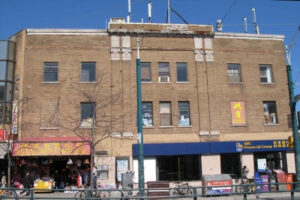Toronto’s Artistic Spirit: Always in Rebellion?
In 2012, Toronto bore witness to an ironic paradox. Students from the Ontario College of Art and Design (OCAD) took to the streets to protest a $180 art textbook. Ironically, it had no illustrations. Imagine, an art book with no art! Now, if that isn’t an antithesis to Toronto’s vibrant artistic culture, what is?
Here’s a closer peek into that head-scratching moment:
Why the OCAD Students Protested
On the surface, it’s a no-brainer. Art students, heck, anyone, would raise eyebrows over an art book that shies away from showing art. But the OCAD protest wasn’t just about the absence of imagery. It was about:
- Cost: $180 isn’t pocket change. Particularly for cash-strapped college students, it’s a pinch. For a book that lacked a fundamental component, the price seemed exorbitant.
- Value: Without visual examples, the textbook’s educational value was questioned. Isn’t seeing believing, especially in art?
- Principle: The protest echoed larger concerns. Rising tuition fees, expensive course materials – it was a call to recognize the financial burdens of higher education.
It’s like expecting someone to grasp the beauty of Toronto’s skyline without ever laying eyes on the CN Tower.
Students and the Power of Voice
Never underestimate the voice of the youth, especially when they’re armed with paintbrushes and raw talent. Here’s how OCAD students made their voices echo:
- Street Marches: No, they weren’t silent. They chanted, they rallied, they ensured their voices ricocheted off Toronto’s artsy streets.
- Artistic Expression: They say art speaks when words fail. Students created pieces reflecting their discontent, turning frustration into visual masterpieces.
- Digital Movement: The age of the internet! Online platforms became stages for protest, magnifying the movement beyond Toronto.
Remember the saying, “actions speak louder than words?” Well, OCAD students embodied that.
Contextualizing the OCAD Protest in Toronto’s Art Landscape
Toronto isn’t just Canada’s largest city; it’s a melting pot of creativity. Places like Kensington Market, the Art Gallery of Ontario, and Queen Street West pulsate with artistic energy.
- History of Artistic Protests: The 2012 OCAD movement wasn’t an isolated event. Toronto’s art community, resilient and vocal, has a history of standing up for its beliefs. Be it against defunding arts programs or for inclusivity in exhibitions, the city’s artists have always been front and center.
- Economic Implications: Art isn’t just about expression. It’s a significant economic driver. From tourism to job creation, the repercussions of stifling artistic voices can be far-reaching for Toronto.
Isn’t it ironic? An art-free textbook inadvertently celebrated the spirit of art – by sparking a revolt.
The Aftermath: Lessons and Reflections
Did the protest lead to the printing presses rolling out illustrated versions of the textbook? Well, that’s not the focal point. The OCAD uprising of 2012 holds lessons far beyond a course material debacle.
- Understanding the Audience: Publishers, and indeed any business, ought to understand their target audience. Know their needs, anticipate their responses. It saves a whole lot of heartburn.
- Empowerment through Unity: The OCAD students showcased the might of unity. When a community comes together for a cause, they create waves.
- Evolution of Art: The protest was a testament to the ever-evolving nature of art. Art isn’t static; it’s dynamic, reactive, and always in conversation with its surroundings.
So, was the $180 art-free art textbook a blip in Toronto’s art scene? Maybe. But it sure left an indelible mark, not just on the annals of OCAD, but on Toronto’s rich tapestry of art and activism.
Footnotes:
[1] For more details on the OCAD protest, refer to Toronto Star’s coverage.
[2] An insightful read on Toronto’s art scene can be found at Wikipedia.
Further Reading:
- The Artistic Soul of Toronto: A Visual Journey
- Student Protests: The Movements that Shaped the World






